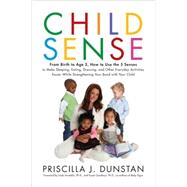
Note: Supplemental materials are not guaranteed with Rental or Used book purchases.
Purchase Benefits
What is included with this book?
| Foreword | p. vii |
| Introduction | p. xiii |
| You and Your Child | |
| Discovering the Key to the Sense Types | p. 3 |
| Identifying Your Child's Sense Mode | p. 28 |
| Identifying Your Own Sense Mode | p. 45 |
| The Four Senses | |
| The Tactile Child | p. 63 |
| The Auditory Child | p. 109 |
| The Visual Child | p. 160 |
| The Taste/Smell Child | p. 205 |
| Managing Your Child Under Stress | p. 249 |
| A Final Note | p. 287 |
| Acknowledgments | p. 289 |
| Index | p. 291 |
| Table of Contents provided by Ingram. All Rights Reserved. |
The New copy of this book will include any supplemental materials advertised. Please check the title of the book to determine if it should include any access cards, study guides, lab manuals, CDs, etc.
The Used, Rental and eBook copies of this book are not guaranteed to include any supplemental materials. Typically, only the book itself is included. This is true even if the title states it includes any access cards, study guides, lab manuals, CDs, etc.
Excerpted from Child Sense: From Birth to Age 5, How to Use the 5 Senses to Make Sleeping, Eating, Dressing and Other Everyday Activities Easier While Strengthening Your Bond with Child by Priscilla J. Dunstan
All rights reserved by the original copyright owners. Excerpts are provided for display purposes only and may not be reproduced, reprinted or distributed without the written permission of the publisher.